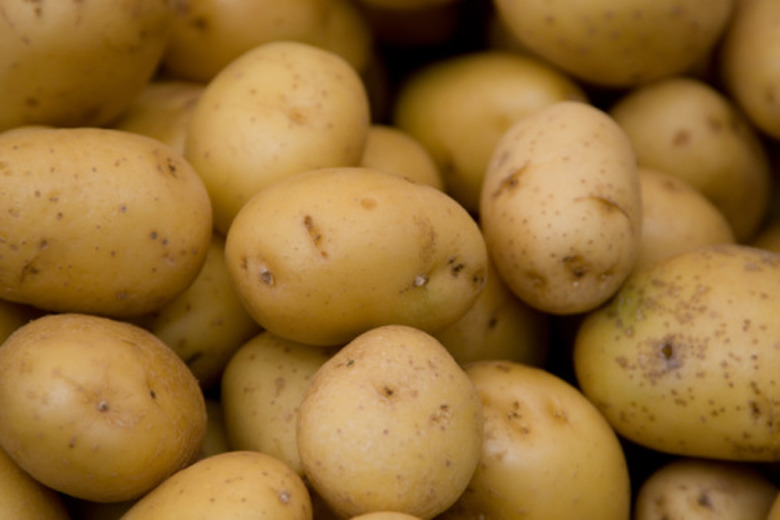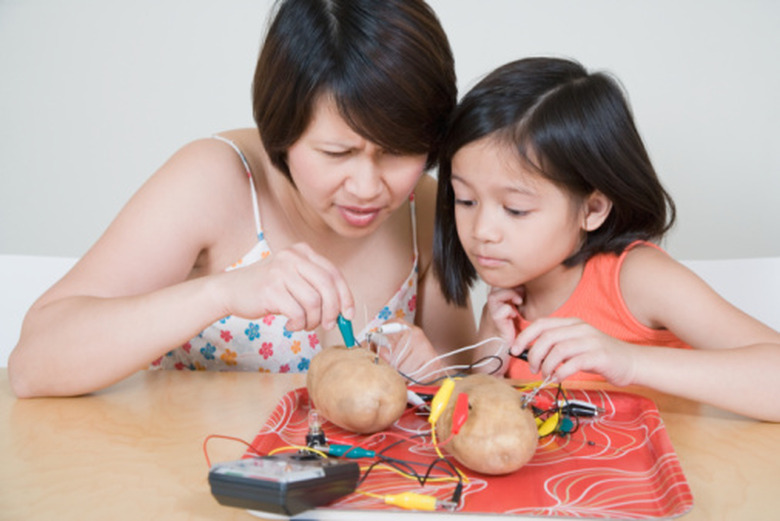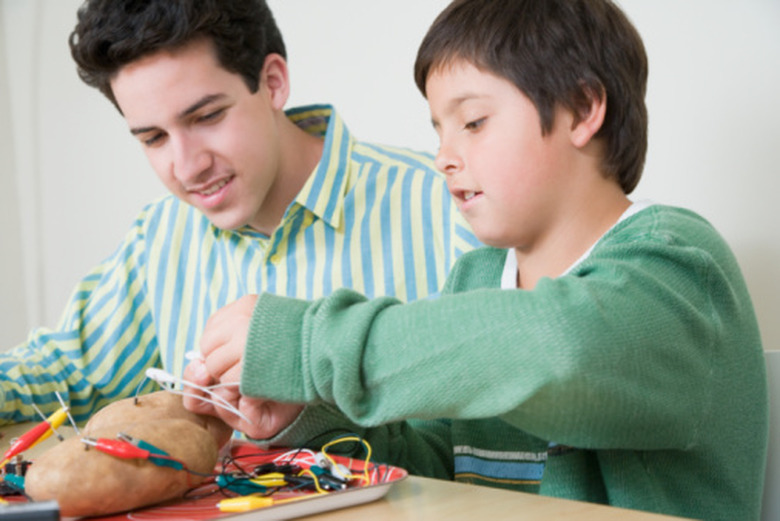Potato & Battery Science Projects
Though it can't power a computer, you can make a battery out of a potato — and many other foods, for that matter. Certain fruits and vegetables such as potatoes, lemons and tomatoes contain acids that act as electrolytes, or substances that help release electrons. When you insert two different metals into a potato, it creates an imbalance of released electrons, causing the electrons to flow and create electricity.
Simple Potato Battery
Simple Potato Battery
To create a potato battery, collect a potato — any size, shape and variety; a piece of copper wire, penny or a copper plated nail; a zinc galvanized nail; two pieces of wire; a small object to power, such as a small LED light or clock; and a multimeter, which is a device that can read voltage and current. Stick the penny and the nail into the potato, about an inch apart. They should reach nearly the center of the potato, but don't let them touch. Wrap one piece of wire around the end of the zinc nail, and wrap the other piece of wire around the copper object. Connect each wire to one lead of the multimeter to read the voltage and current. Then connect the ends of the wire to the leads of the object you want to power. If the object doesn't turn on, try reversing the leads.
Potato Series
Potato Series
When you make a single potato battery, you do not obtain very much power — not even enough to turn on a normal sized light bulb. To see if you can generate more power, try setting up a series of potato batteries. Create each battery by inserting two different pieces of metal — one zinc and one copper — and connect them with wire. Use a multimeter to read the voltage and current produced every time you add a new potato to the series. Note which value changes, and explain why you still cannot generate much power with a series.
Different Materials
Different Materials
The chemical reaction that takes place inside the potato is responsible for creating electricity. To see if you can improve the effectiveness or speed of this reaction, try using different types of metals in various combinations. First, test what happens when you use two pieces of the same metal. Then, test a series of metals in different combinations with each other. In addition to zinc and copper, you could test a nickel, an iron nail, aluminum foil, a brass button or a paper clip. You can also test different types of potatoes, different sizes of potatoes, non-metallic electrodes or different types of connecting wires.
Comparison with Other Foods
Comparison with Other Foods
Potatoes are not the only food product that produces the necessary chemical reaction to produce a flow of electrons. Citrus fruits also contain a special chemical, citric acid, that reacts with metal to produce electricity. Compare the voltage and current produced by a potato battery to that of a lemon, tomato, orange, apple, watermelon, loaf of bread or any other type of food you want to test. Hypothesize which food you think will make the best battery, and compare your results, explaining how each food reacted and why.
Cite This Article
MLA
Gronot, Amanda. "Potato & Battery Science Projects" sciencing.com, https://www.sciencing.com/potato-battery-science-projects-7963661/. 24 April 2017.
APA
Gronot, Amanda. (2017, April 24). Potato & Battery Science Projects. sciencing.com. Retrieved from https://www.sciencing.com/potato-battery-science-projects-7963661/
Chicago
Gronot, Amanda. Potato & Battery Science Projects last modified August 30, 2022. https://www.sciencing.com/potato-battery-science-projects-7963661/


